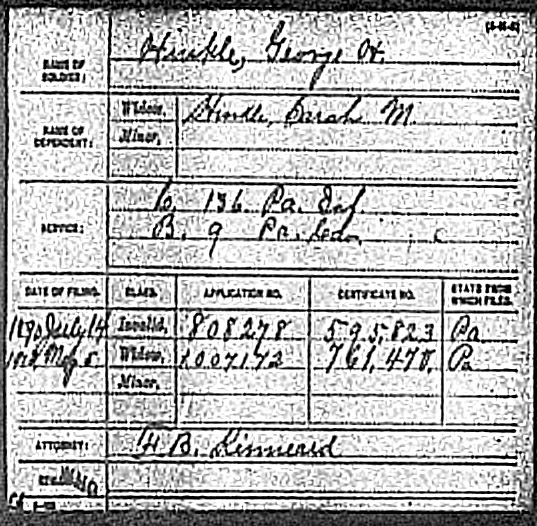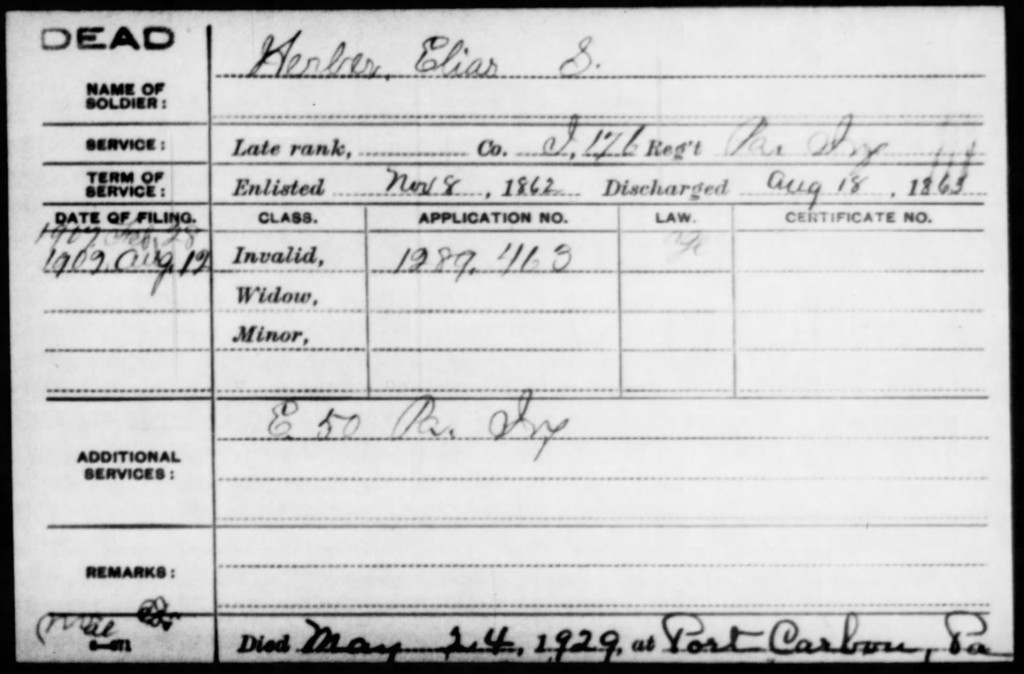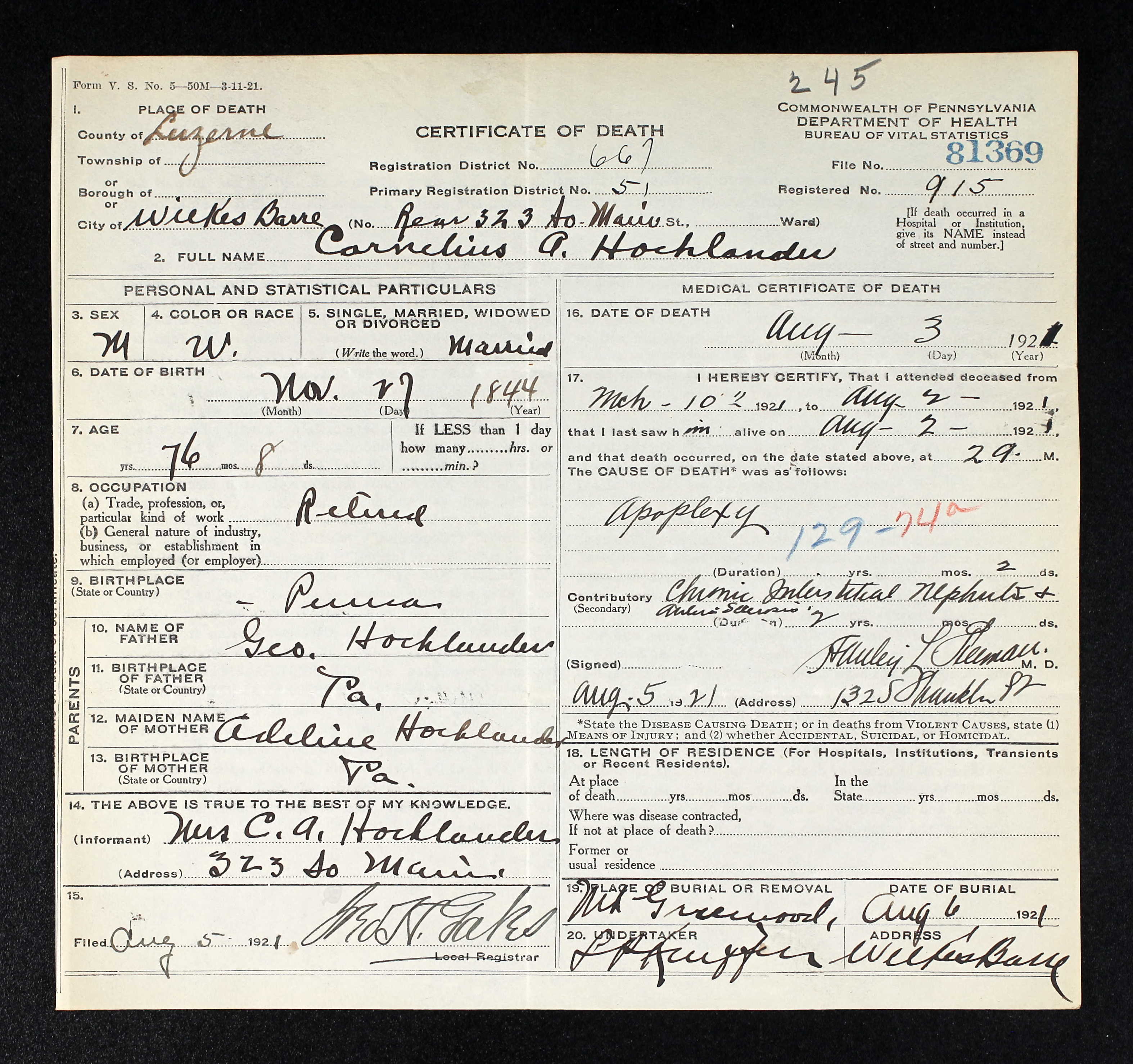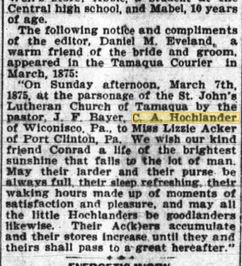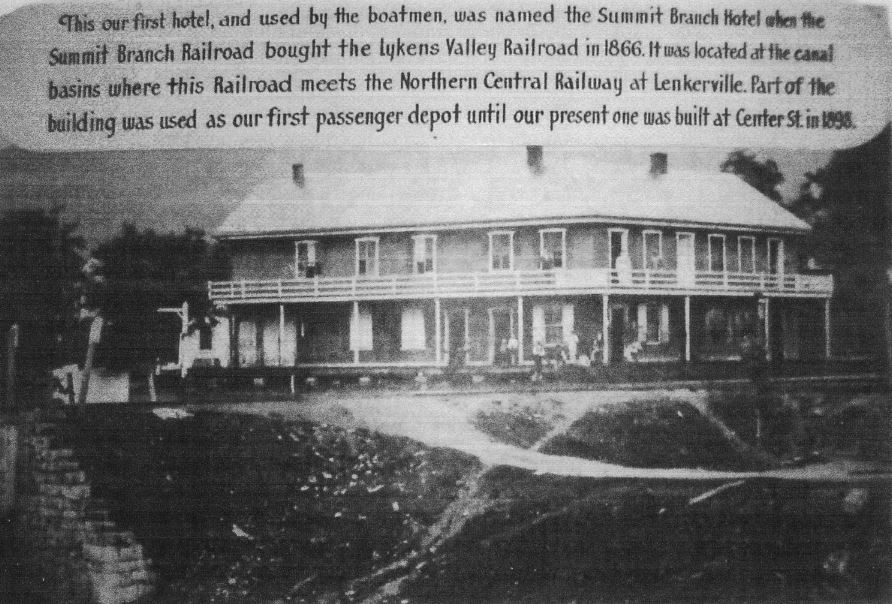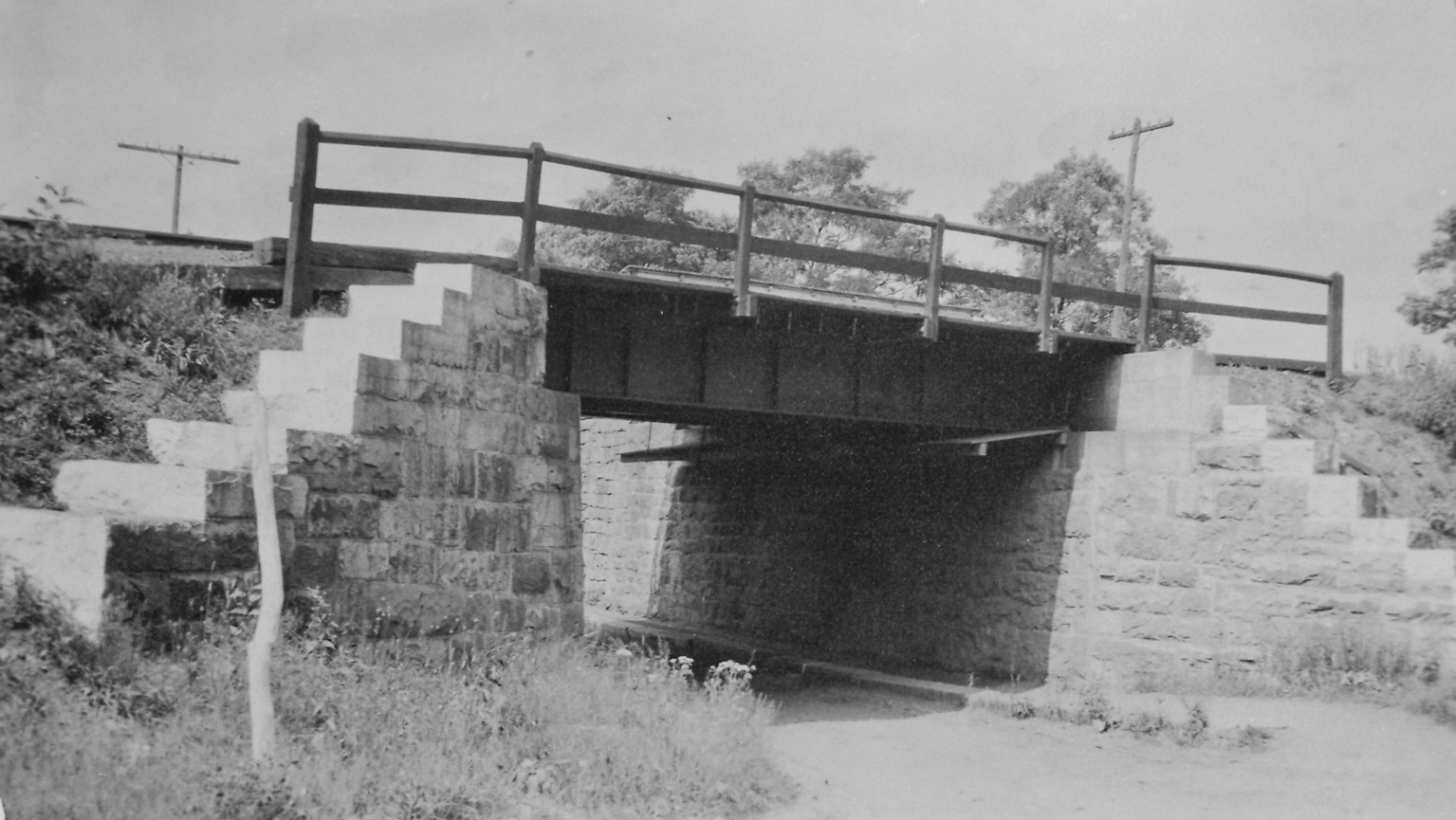Two Men Named George Hinkle
Posted By Norman Gasbarro on April 19, 2016
Two men named George Hinkle, both associated with the Lykens Valley area of Pennsylvania, saw Civil War service. They can be differentiated by their middle initial and regiment/company of service. It does not appear that they are closely related, although additional research could prove otherwise.
George W. Hinkle (1843-1878)
George W. Hinkle is buried at the Free Grace Brethren in Christ Church Cemetery in Rife, Upper Paxton Township, Dauphin County, Pennsylvania. His grave marker is sunken in the ground so that the inscriptions below his birth date of 6 June 1843 cannot be read. There is a G.A.R. Star-Flag Holder at his grave, but there is no information available at the cemetery to specifically indicate his Civil War service.
Two emergency regiments have been located for this George W. Hinkle:
The first service was in the 6th Pennsylvania Infantry (Emergency of 1862), Company E, as a Private. George W. Hinkle enrolled on 13 September 1862 at Halifax, Dauphin County. He gave his age as 23 and his residence as Millersburg. At the end of the emergency, he was discharged on 27 September 1862.
The second service was in the 26th Pennsylvania Infantry (Emergency of 1863), Company K, as a Private. George W. Hinkle enrolled at Millersburg on 18 June 1863 at the age of 19. He was mustered into service on 20 June 1863. However, his discharge date is in question, since in the “remarks” section, it is noted that he was “missing since 26 June 1863.”
The 26th Pennsylvania Infantry (Emergency of 1863) served at Gettysburg, having been called into service by Governor Andrew Curtin to assist in repelling the forces of Gen. Robert E. Lee as they invaded Pennsylvania. It is the only one of many 1863 Pennsylvania emergency regiments that is honored on the Pennsylvania Memorial at Gettysburg.
The plaque from the Pennsylvania Memorial is shown above (Company K). It does not have the name of George W. Hinkle, and this could confirm that he did not go to Gettysburg with his regiment and company. However, these plaques have been shown to be inaccurate, though the fact that his name is not on the plaque does possibly confirm the statement on the Pennsylvania Veterans’ Index Card that he was “missing.” There are several interpretations of “missing,” including “deserted,” absent due to illness, and/or possibly not properly mustered .
Another Civil War era document found for George W. Hinkle is the 1863 United States Civil War Draft record, shown above from Ancestry.com. On the 3rd line from the bottom, there is a George W. Hinkle who was 20 years old in 1863, was living in Upper Paxton Township, was working as a mason, and was single. Noteworthy about this record is that George did not report his prior service in the Emergency Force of 1862, nor did he report his service in the 1863 Emergency Force, which should have been occurring at the time of the draft.
No Pension Index Card has been located for George W. Hinkle. If his only service was with the emergency forces, then he did not meet the 3-month requirement for a pension. He also died on 9 April 1878, which was well before the rules were relaxed in 1890.
George W. Hinkle is believed to be the son of Dr. George W. Hinkle (1809-1885), who died in Millersburg and is buried at Rife.
Finally, if George W. Hinkle was a Civil War veteran, with service at least in the 1862 Emergency Force, and recognition at graveside as a war veteran, he is not mentioned on the Millersburg Soldier Monument – still another missing soldier who had a connection to Millersburg and/or Upper Paxton Township. Additional research is needed to determine why he was included when the monument was erected just over 100 years ago.
——————————–
George H. Hinkle (1834-1913)

George H. Hinkle died on 29 April 1913 in Dauphin Borough, Dauphin County, Pennsylvania, and is buried there in the Dauphin Cemetery, with his wife Sarah M. Hinkle (1838-1919). According to his death certificate, he was the son of Jacob Hinkle and Elizabeth [Seidel/Spidel] Hinkle and was born in Cumberland County, Pennsylvania, 30 November 1834.
George H. Hinkle‘s first service was with the 136th Pennsylvania Infantry, Company C, as a Private. He enrolled at Dauphin County (probably Dauphin Borough) on 9 August 1862 and was mustered into service on 27 August 1862 at Harrisburg. Other than his age of 33, there is no other personal information about him available from the index card available from the Pennsylvania Archives. He was honorably discharged on 29 May 1863.
The second service of George H. Hinkle was with the 9th Pennsylvania Cavalry, Company B, a company that was heavily composed of members from the Lykens Valley area. He enrolled at Harrisburg on 29 August 1864 and was mustered into service on the same day at the same place. There is some personal information about him on the Pennsylvania Veterans’ File Card: (1) he said he was 28 years old; (2) he said his residence was Dauphin County; (3) he gave his occupation as shoemaker; (4) he was 5 foot, 6 inches tall; (5) he had sandy hair, blue eyes, and a fair complexion.
George H. Hinkle does not appear in the book Yankee Cavalrymen by John W. Rowell, a history of the 9th Pennsylvania Cavalry. The only currently available information about his service in the cavalry is found in his own words as given to the 1890 Census taker: “Badly injured by horse falling.”
The U.S. Draft Registration of 1863 (shown above from Ancestry.com) reported him as a resident of Middle Paxton Township (bottom line) and as a 28 year old married shoemaker, but did not report his then-current service in the 136th Pennsylvania Infantry.
George H. Hinkle applied for a pension on 14 July 1890, which he received and collected until his death on 29 April 1913. His widow, Sarah, then applied for benefits, which she received. The Pension Index Card shown above is from Ancestry.com.
George and Sarah had at least six children, all of which have been verified in Ancestry.com family trees. One daughter, Susan Alice Hinkle, born about September 1868, married George Washington Umholtz (1866-1958), the son of John Umholtz of Halifax Township and Mary [Hoffman] Umholtz of Lykens Township. Thus far, this is the only confirmed connection of George H. Hinkle with the Lykens Valley area, albeit indirect (through his daughter’s marriage).
———————————
Additional information is sought on both George W. Hinkle and George H. Hinkle and readers are invited to submit comments to this post or send an e-mail to the Project.
 ;
;








